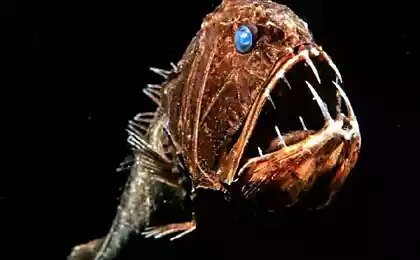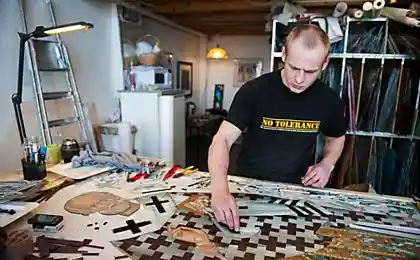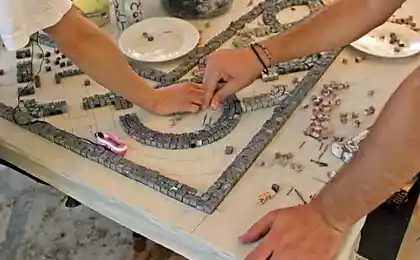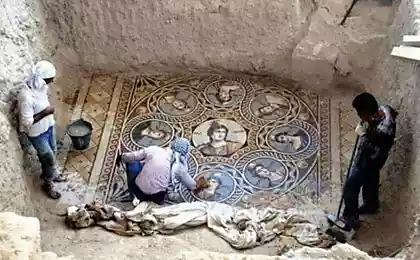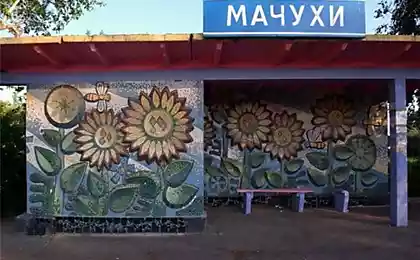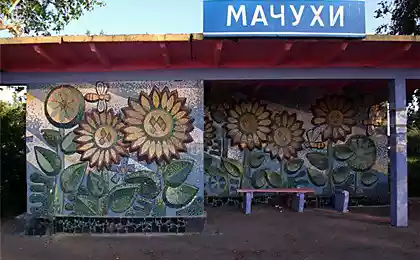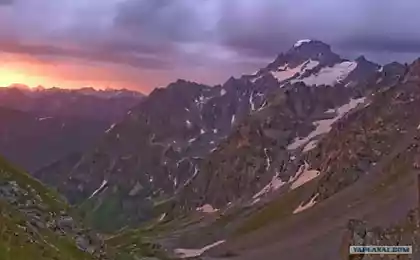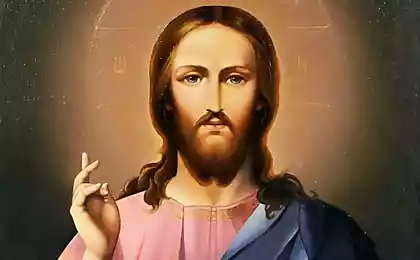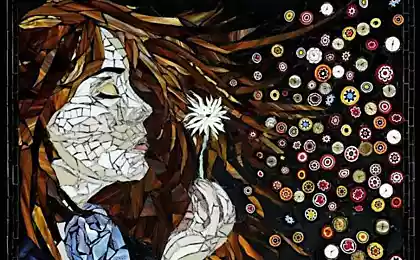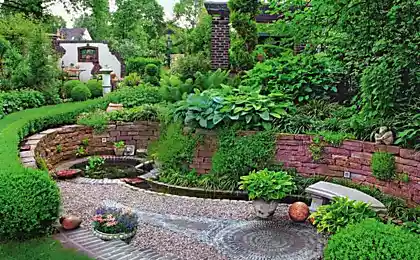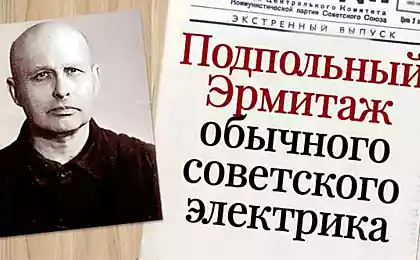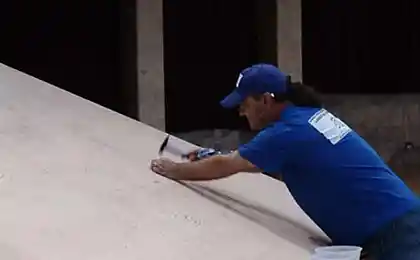891
Unique Byzantine mosaics
Writes aquatek-filips:
Mosaic Museum, which will be discussed below, is actually a part of the peristyle of a large imperial palace in Constantinople, which was discovered in the 30s of the last century, and literally raised from the ashes outright burnt buildings market and the former stables of the Ottoman army, which were located on the site once majestic Imperial Palace.
As often happens in Istanbul Byzantine mosaics unique V-VI centuries were found by chance during construction work in the area of the Arasta Bazaar in 1933.
The excavations were discovered and removed from the soil about 2 thousand square meters of priceless mosaics, executed with the greatest skill of lime, terracotta and glass 5mm dice, the number of which per 1 sq.m. up to 40 (!!!) million.

All these wonderful mosaics are in the Museum of Mosaics, which is located near the very Arasta Bazaar.
To find it, you need to get around the Blue Mosque from the back side and go down the street Üçler Sokak-Tavukhane Sokak to Arasta Bazaar, log on to the market itself, and about the middle of the right side of the gap will be shopping malls and to the right path. Here and in the entrance to the excavated Mosaic Museum.
The museum is open from 9 to 16 on all days except Mondays. Admission is 8 YTL.
Once at the site of the abandoned ashes of burned buildings outright market and the former stables of the Ottoman army of construction workers stumbled upon an unusual pattern on the stone, the researchers from the University of St Andrews (England) conducted extensive archaeological surveys. The result was discovered huge structure, an area of more than four thousand square meters, later identified as the peristyle large imperial palace in Constantinople. In addition, there were the remains of pillars, made to the Corinthian. This peristyle, apparently, was rebuilt during the reign of Justinian (527-565 AD). But the main archaeological finds, it is, of course, miraculously preserved mosaic floors that once adorned the majestic building. Untouched by time, mosaics were found on an area of two thousand square meters.
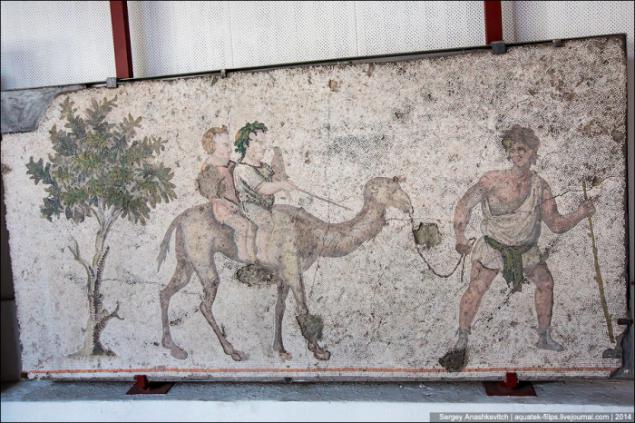
The museum is located right on the very spot of excavation - exactly where were found mosaics and the peristyle of the palace was located.
The first exposition of the museum was opened in 1953.
Unfortunately, the first museum building was wooden. Changes in temperature and humidity caused mosaics greater damage than in all previous years. In 1987 he was handed over to new capital building of the museum. And in 2012 it was renovated and improved ventilation and air conditioning.
Today, thousands of tourists can see the unique Byzantine mosaics. A look at what is !!!

Grand Imperial Palace served not only home to the ruling family, but also the center of the state government, for civil and religious ceremonies. In fact, it was a huge and luxurious complex - seven palaces, the official residence of the Emperor and Empress, office space, a lot of churches and chapels, situated among lush gardens and parks ...
But time does its thing. Moved into the official residence of the Blachernae palace, and this complex gradually fell into disrepair, helped as earthquakes and fires ...
So great imperial palace disappeared, buried underground for many centuries the incredible beauty and complexity of the mosaic ...
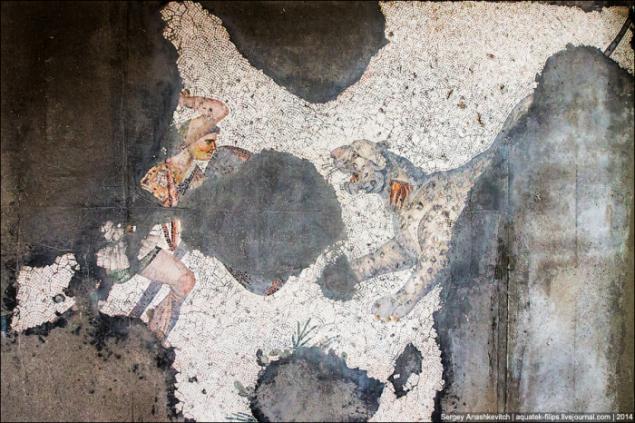
Today, the mosaic museum in Istanbul are a variety of pieces found "floors" - from small, measuring about one square meter, to huge, with the parties, is estimated at six meters. All in all, the museum has about ninety mosaic of genres that describe the everyday life of Byzantium: mythical creatures, exotic animals, scenes of hunting, fighting between animals, scenes of everyday life, children playing, etc.

The mosaics are made with the greatest art of limestone, terra cotta and glass 5mm dice, the number of which per 1 sq.m. reaches 40 thousand.
This is an incredible complexity and impressive on the final result of the work

It is impossible not to note the high realism in the depiction of genre scenes, which have been achieved thanks to the extraordinary talent and skill of the ancient decorators.
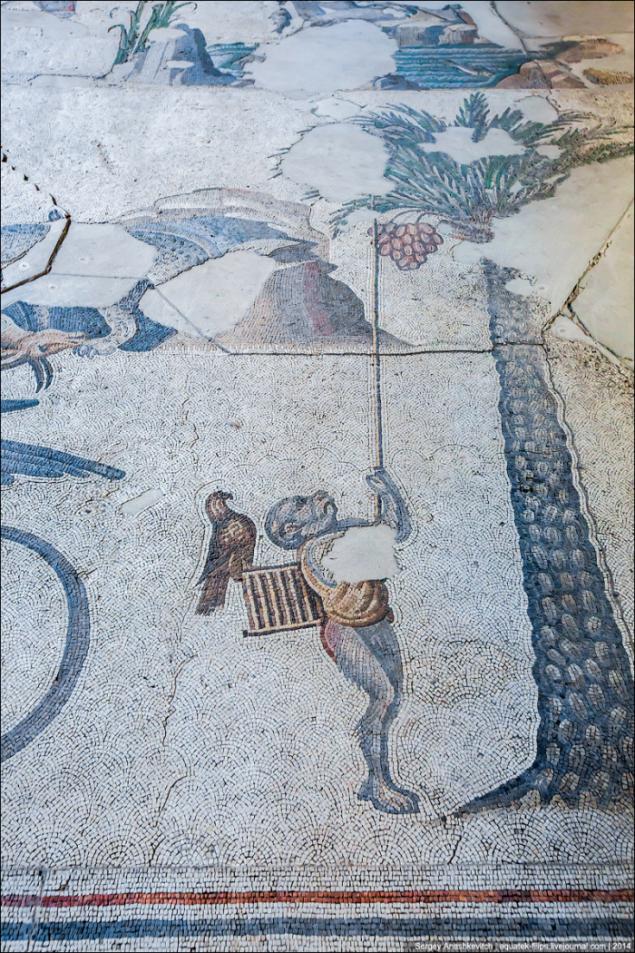
Of course, many mosaic slabs are damaged or lost areas, and some even badly damaged ...
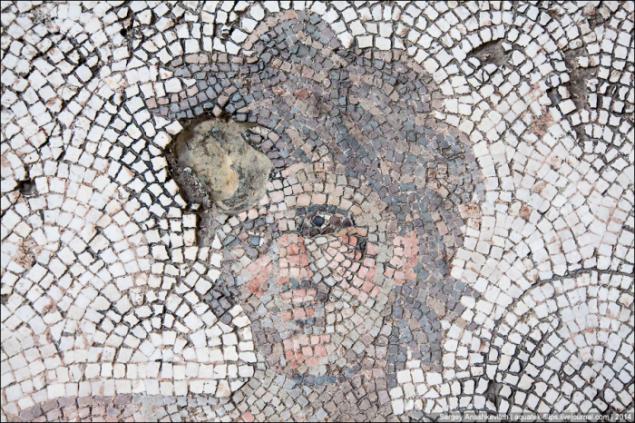
But there is virtually untouched by time and external influences huge 6-meter stone panels

It's amazing how many different lines and directions. The figures hardly find significant areas in which the image would be spread in a single plane - the circle replaced by straight lines, and those in turn segments of a circle, radiating in different directions roses and rounded.
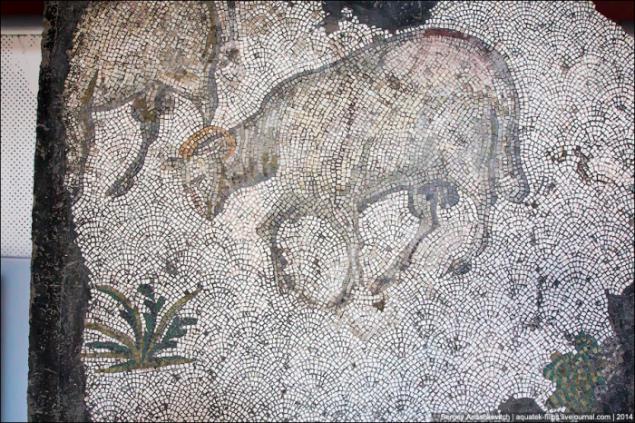
At different mosaics can be seen putting some different styles and materials used - glass, colored pottery, terracotta
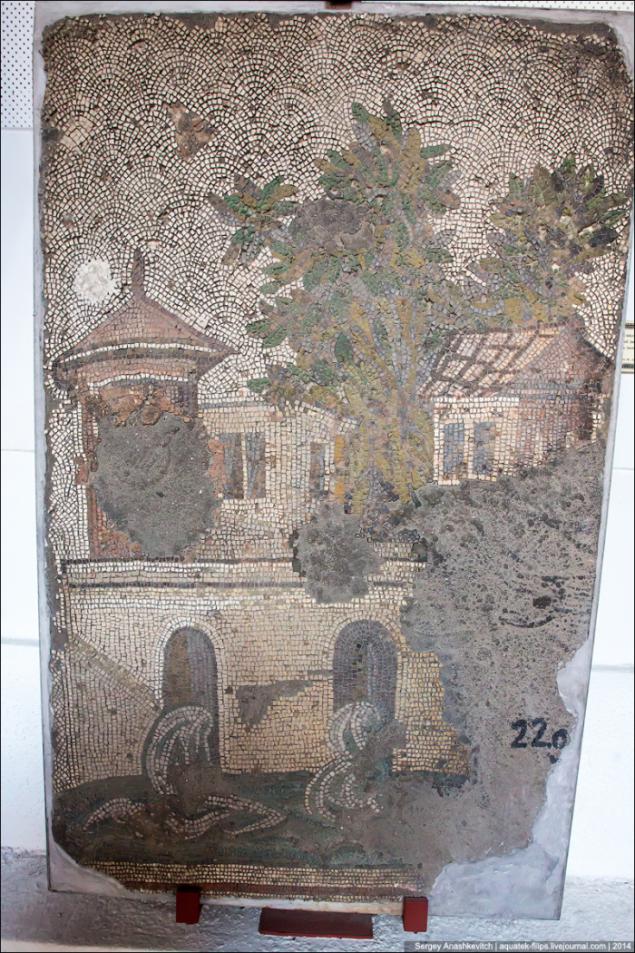
Striking detail !!! And the use of different sizes of cubes to give the most realistic figure
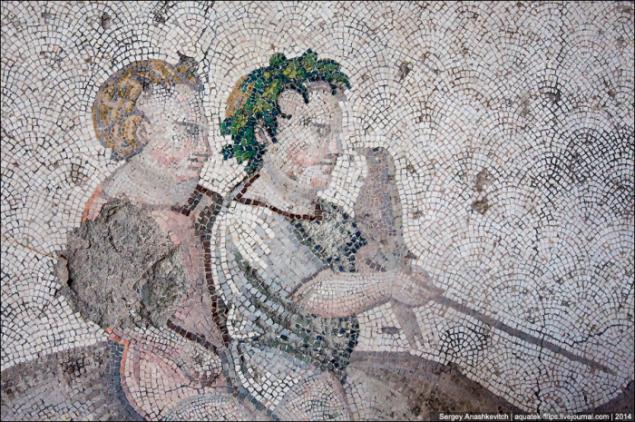
We should also be said about the art of mosaic.
As a rule, mosaics laid on a drainage layer of bat ceramics, with thickness up to half a meter. Interestingly, the insulating layer is found under the floor of the peristyle consisted of an enormous number of broken clay amphoras, which in ancient Constantinople everywhere brought wine and oil.
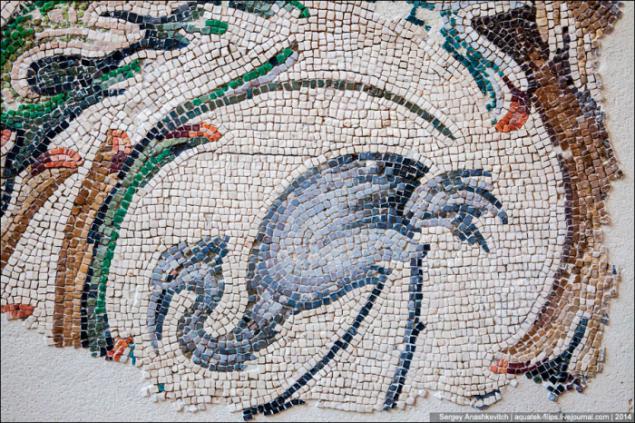
After filling draining soil consisting of a mixture of sand, clay and charcoal, made a thorough compaction. Then, in rectangular shapes solution was poured cement, which were laid blocks of marble, glass, clay and terracotta tiles of different colors.

And, as stated above, per square meter of such a mosaic took 40 thousand multi-colored cubes.
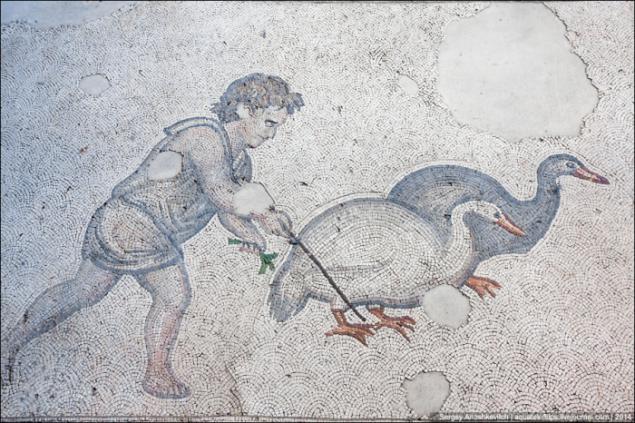
In the images we see not only the domestic scene, but also mythical
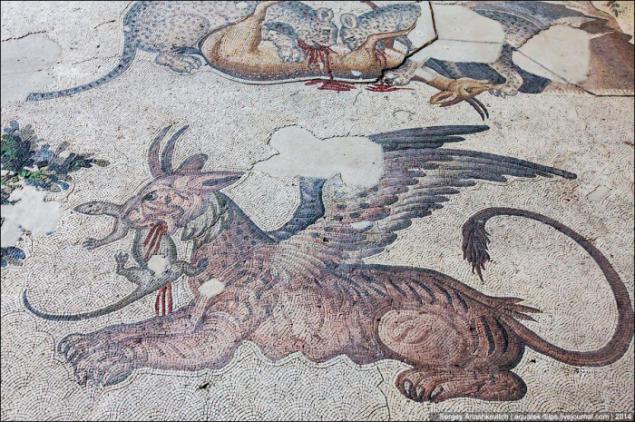
Children playing with a puppy
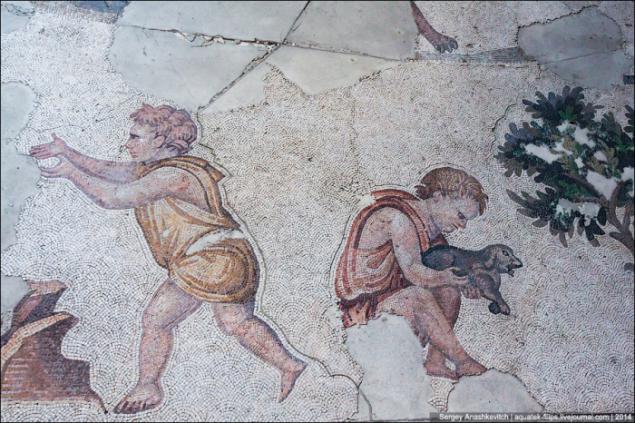
Particularly impressive scenes can be seen on huge plates located in the lower part of the museum, directly on the surface of the earth
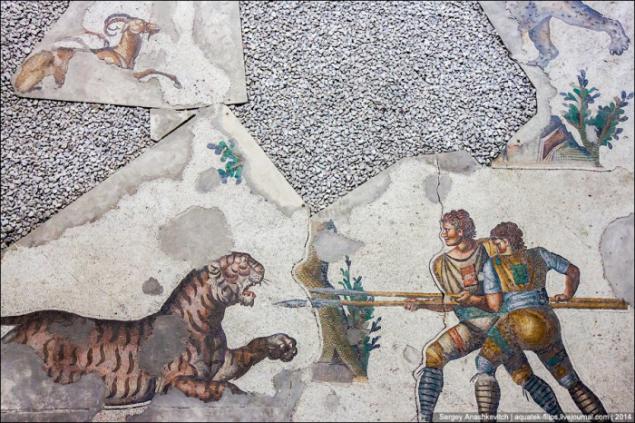
Some plates with mosaics (usually not very large) are fixed to the walls of the first and second tiers
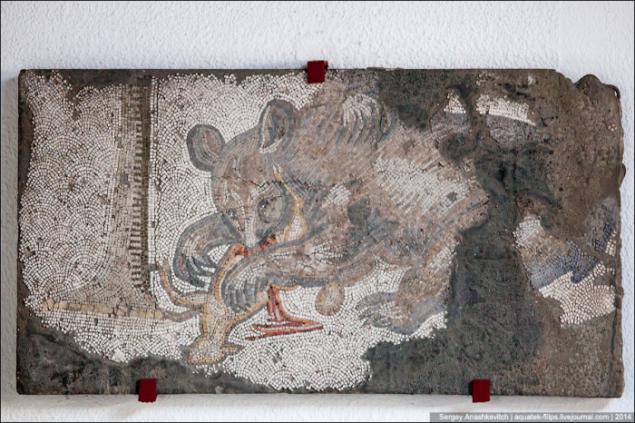
A lot of hunting scenes
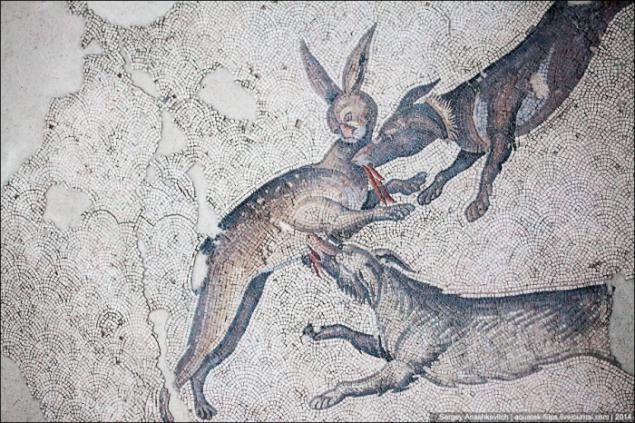
shte little detail some images
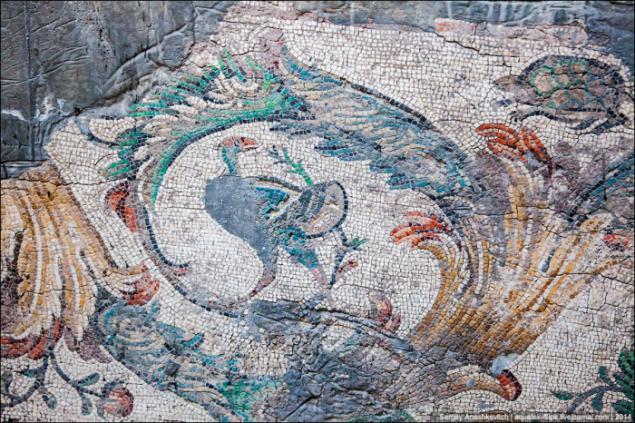


©
Mosaic Museum, which will be discussed below, is actually a part of the peristyle of a large imperial palace in Constantinople, which was discovered in the 30s of the last century, and literally raised from the ashes outright burnt buildings market and the former stables of the Ottoman army, which were located on the site once majestic Imperial Palace.
As often happens in Istanbul Byzantine mosaics unique V-VI centuries were found by chance during construction work in the area of the Arasta Bazaar in 1933.
The excavations were discovered and removed from the soil about 2 thousand square meters of priceless mosaics, executed with the greatest skill of lime, terracotta and glass 5mm dice, the number of which per 1 sq.m. up to 40 (!!!) million.

All these wonderful mosaics are in the Museum of Mosaics, which is located near the very Arasta Bazaar.
To find it, you need to get around the Blue Mosque from the back side and go down the street Üçler Sokak-Tavukhane Sokak to Arasta Bazaar, log on to the market itself, and about the middle of the right side of the gap will be shopping malls and to the right path. Here and in the entrance to the excavated Mosaic Museum.
The museum is open from 9 to 16 on all days except Mondays. Admission is 8 YTL.
Once at the site of the abandoned ashes of burned buildings outright market and the former stables of the Ottoman army of construction workers stumbled upon an unusual pattern on the stone, the researchers from the University of St Andrews (England) conducted extensive archaeological surveys. The result was discovered huge structure, an area of more than four thousand square meters, later identified as the peristyle large imperial palace in Constantinople. In addition, there were the remains of pillars, made to the Corinthian. This peristyle, apparently, was rebuilt during the reign of Justinian (527-565 AD). But the main archaeological finds, it is, of course, miraculously preserved mosaic floors that once adorned the majestic building. Untouched by time, mosaics were found on an area of two thousand square meters.

The museum is located right on the very spot of excavation - exactly where were found mosaics and the peristyle of the palace was located.
The first exposition of the museum was opened in 1953.
Unfortunately, the first museum building was wooden. Changes in temperature and humidity caused mosaics greater damage than in all previous years. In 1987 he was handed over to new capital building of the museum. And in 2012 it was renovated and improved ventilation and air conditioning.
Today, thousands of tourists can see the unique Byzantine mosaics. A look at what is !!!

Grand Imperial Palace served not only home to the ruling family, but also the center of the state government, for civil and religious ceremonies. In fact, it was a huge and luxurious complex - seven palaces, the official residence of the Emperor and Empress, office space, a lot of churches and chapels, situated among lush gardens and parks ...
But time does its thing. Moved into the official residence of the Blachernae palace, and this complex gradually fell into disrepair, helped as earthquakes and fires ...
So great imperial palace disappeared, buried underground for many centuries the incredible beauty and complexity of the mosaic ...

Today, the mosaic museum in Istanbul are a variety of pieces found "floors" - from small, measuring about one square meter, to huge, with the parties, is estimated at six meters. All in all, the museum has about ninety mosaic of genres that describe the everyday life of Byzantium: mythical creatures, exotic animals, scenes of hunting, fighting between animals, scenes of everyday life, children playing, etc.

The mosaics are made with the greatest art of limestone, terra cotta and glass 5mm dice, the number of which per 1 sq.m. reaches 40 thousand.
This is an incredible complexity and impressive on the final result of the work

It is impossible not to note the high realism in the depiction of genre scenes, which have been achieved thanks to the extraordinary talent and skill of the ancient decorators.

Of course, many mosaic slabs are damaged or lost areas, and some even badly damaged ...

But there is virtually untouched by time and external influences huge 6-meter stone panels

It's amazing how many different lines and directions. The figures hardly find significant areas in which the image would be spread in a single plane - the circle replaced by straight lines, and those in turn segments of a circle, radiating in different directions roses and rounded.

At different mosaics can be seen putting some different styles and materials used - glass, colored pottery, terracotta

Striking detail !!! And the use of different sizes of cubes to give the most realistic figure

We should also be said about the art of mosaic.
As a rule, mosaics laid on a drainage layer of bat ceramics, with thickness up to half a meter. Interestingly, the insulating layer is found under the floor of the peristyle consisted of an enormous number of broken clay amphoras, which in ancient Constantinople everywhere brought wine and oil.

After filling draining soil consisting of a mixture of sand, clay and charcoal, made a thorough compaction. Then, in rectangular shapes solution was poured cement, which were laid blocks of marble, glass, clay and terracotta tiles of different colors.

And, as stated above, per square meter of such a mosaic took 40 thousand multi-colored cubes.

In the images we see not only the domestic scene, but also mythical

Children playing with a puppy

Particularly impressive scenes can be seen on huge plates located in the lower part of the museum, directly on the surface of the earth

Some plates with mosaics (usually not very large) are fixed to the walls of the first and second tiers

A lot of hunting scenes

shte little detail some images



©
